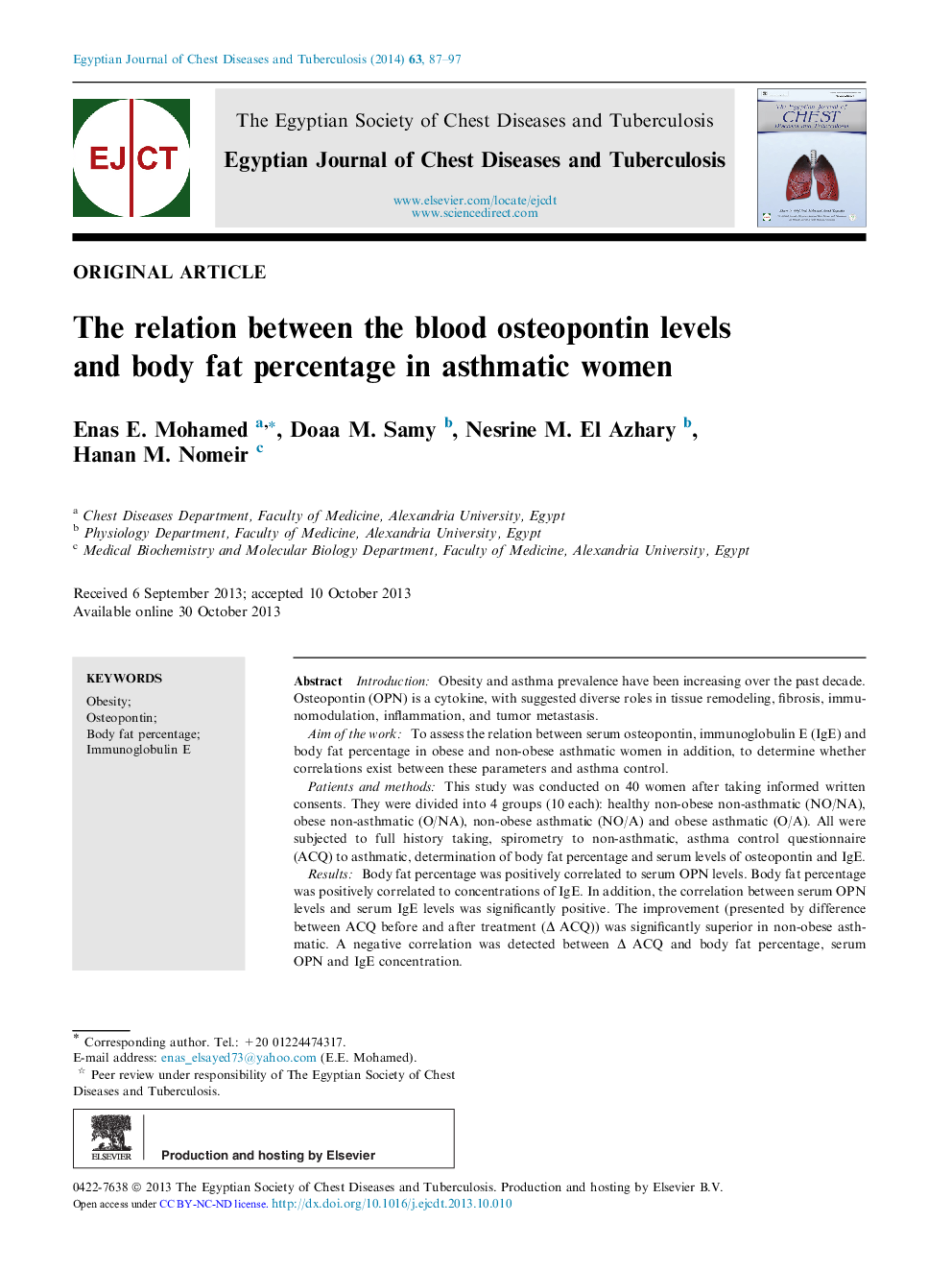| Article ID | Journal | Published Year | Pages | File Type |
|---|---|---|---|---|
| 3400140 | Egyptian Journal of Chest Diseases and Tuberculosis | 2014 | 11 Pages |
IntroductionObesity and asthma prevalence have been increasing over the past decade. Osteopontin (OPN) is a cytokine, with suggested diverse roles in tissue remodeling, fibrosis, immunomodulation, inflammation, and tumor metastasis.Aim of the workTo assess the relation between serum osteopontin, immunoglobulin E (IgE) and body fat percentage in obese and non-obese asthmatic women in addition, to determine whether correlations exist between these parameters and asthma control.Patients and methodsThis study was conducted on 40 women after taking informed written consents. They were divided into 4 groups (10 each): healthy non-obese non-asthmatic (NO/NA), obese non-asthmatic (O/NA), non-obese asthmatic (NO/A) and obese asthmatic (O/A). All were subjected to full history taking, spirometry to non-asthmatic, asthma control questionnaire (ACQ) to asthmatic, determination of body fat percentage and serum levels of osteopontin and IgE.ResultsBody fat percentage was positively correlated to serum OPN levels. Body fat percentage was positively correlated to concentrations of IgE. In addition, the correlation between serum OPN levels and serum IgE levels was significantly positive. The improvement (presented by difference between ACQ before and after treatment (Δ ACQ)) was significantly superior in non-obese asthmatic. A negative correlation was detected between Δ ACQ and body fat percentage, serum OPN and IgE concentration.In conclusionBecause the multiple roles of OPN action potentially contribute to inflammation in obesity, it is suggested that, in addition to weight reduction, interference with OPN action could become a therapeutic strategy in the treatment of obesity worsening disorders like bronchial asthma.
